Kenneth L. Gentry Jr.'s Blog, page 30
January 10, 2023
SLIPPERY ESCHATOLOGICAL LABELS
PMW 2023-003 by Kenneth L. Gentry, Jr.
Be aware, if you try to discover if an evangelical has adopted Full Preterism (aka Hyperpreterism), you have to be careful and precise when you ask him his views. You cannot simply ask him about a certain label to discover where he stands. This is so for two reasons:
(1) Full Preterism (Hyperpreterism), like most theogical systems and movements, has many variations. You cannot simply ask someone, “Are you a Full Preterist?” That person might want to avoid association with a few (or even many) of its implications, so they could simply say they are not “Full Preterist” since they don’t adopt the whole system. This is much like the logical problem of the Fallacy of the Complex Question. You can’t answer “yes” or “no” to the question: “Have you stopped beating your wife?”
In fact, Full Preterists themselves generally disavow the label “Hyperpreterism.” Common sense warns people not to be hyper anything (even hyper-spiritual). (Look at how much trouble Elon Musk is in because his hyper-rich!) The Hyperpreterist label has been applied to this movement from outside. It was created by orthodox men who wanted to highlight the erroneous nature of the movement while disassociating it from historic preterism. No HP would grin and say, “Yes, I am a Hyperpreterist.”
 Why I Left Full-Preterism (by Samuel M. Frost)
Why I Left Full-Preterism (by Samuel M. Frost)
Former leader in Full Preterist movement, Samuel M. Frost, gives his testimony and theological reasoning as to why he left the heretical movement. Good warning to others tempted to leave orthodox Christianity.
See more study materials at: KennethGentry.com
(2) To ask someone within orthodox evangelicalism if he is a “Full Preterist” is like asking him, “Would you mind standing on this Improvised Explosive Device for a few minutes, while I take this call on my cell phone?” If he is new to the system, he almost certainly will refuse such a fiery death, whether or not he liked the Dave Clark Five song, “I’m in Pieces, Bits and Pieces.” This is true even if he knows how James Bond is going to return to action after his fiery demise in the last Bond movie, “No Time to Die.”
History shows that the early stages of adopting an heretical view generally follow the rules of dodgeball. That is, as long as you can dodge the ball you are safe. But once you are behind the eight ball moving at a high rate of speed, you are out!
So then, to discover if someone is eschatologically heretical, you should ask three simple, basic questions:
1. Do you believe in a future bodily return of Christ?
2. Do you believe in a future physical resurrection?
3. Do you believe temporal history will end so that sin will be wholly removed from the world and suffering and death will be no more?
Why Not Full-Preterism? by Steve Gregg
This work exposes some of the key flaws in Hyperpreterism by someone who has formally debated them. Much insightful material for those who might be tempted to forsake historic Christian orthodoxy.
For more Christian educational materials: www.KennethGentry.com
January 6, 2023
THE FIRST MAN IS FROM THE EARTH
PMW 2023-002 by Kenneth L. Gentry, Jr.
1 Cor 15:47: “The first man is from the earth, earthy; the second man is from heaven.”
In this verses Paul is comparing Adam and Christ, showing that Adam is a type of Christ. Despite the surface appearance and seeming plausibility, this is not speaking of each person’s source. That is, he is not arguing that Adam came into this world (or into history) from the ground (though that is certainly true), whereas Christ came down from heaven (though this also is true). This interpretation fits neither the context nor the flow of Paul’s argument. Note the following as I build the case.
First, Paul says that “the first man is from the earth, earthy.” This reflects Genesis 2:7, which is translated: “the LORD God formed man of dust from the ground.” The Greek of Paul’s statement reads: ho protos anthropos ek ges choikos. The Greek choikos means “made of earth, made of dust, earthy.” As noted, Paul is echoing the Genesis verse, which in the Septuagint reads: choun apo tes ges. Thus, choikos reflects the LXX choun apo tes ges. If this were all there was to the comparison, one might think Paul is speaking of the separate sources of these two figures.
Second, Paul statement is paralleled in the second half of the verse: “the second man is from heaven.” Again, surface appearance can easily lead one to conclude that Paul is highlight source differences between these individuals, Adam and Christ. The Greek here reads: ho deuteros anthropos ex ouranou. The first man parallels the second man in some way; and the parallel is an antithetic relationship because the first man is ek ges choikos, whereas the second man is ex ouranou. This is saying (as we will see) that the first man is earthly, whereas the second man is heavenly. But what does this mean?
Third, Paul is stating that the second man (Christ) is “heavenly” and not that he is “from heaven.” The last two words in Greek are the predicate of the sentence (ex ouranou)— not the last three words (anthropos ex ouranou). Thus Christ is not “a man-from-heaven,” but a “heavenly-man.” This differentiates the second man from the first as a qualitative statement. This qualitative understanding is supported by the fact that in verses 48 and 49 believers are called epouranios, which is the lexical equivalent of ex oranou. Believers certainly do not come down from heaven to be born.
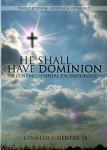
He Shall Have Dominion
(paperback by Kenneth Gentry)
A classic, thorough explanation and defense of postmillennialism (600+ pages). Complete with several chapters answering specific objections.
See more study materials at: www.KennethGentry.com
Fourth, if in v. 47 Paul began speaking of Christ’s pre-existence in heaven, he would contradict his own just stated observation. For in the immediately preceding verse he forthrightly declared: “the spiritual is not first, but the natural; then the spiritual” (v. 46).
Fifth, if we understand ex ouranou qualitatively (i.e., “heavenly”) and then we note what Paul says about Christ’s pre-resurrection life in Romans 8:3, then the phrase must speak of Christ’s humanity (not his pre-existence) which has been qualitatively elevated by virtue of his eschatological resurrection. For Romans 8:3 informs us that Christ came “in the likeness of sinful flesh.” After all, even in his resurrected state in heaven Christ is still spoken of a “the second man” (v. 47).
Conclusion
Thus, Paul is presenting two orders of existence that reflect the two ages of redemptive history. He is presenting the natural order of the current, fallen realm (the first Adam) as over against the resurrected order in the consummate, perfected realm (which Christ as already entered). So then, thirty or so years after Christ’s resurrection, Paul can say: “in Him all the fullness of Deity dwells in bodily form” (Col. 2:9). But by God’s grace and through his Spirit, we are now tasting the powers of the age to come (Heb. 2:6) though we have not fully and perfectly realized them, since we are not physically resurrected.
 The Harrowing of Hell (by Jay Rogers)
The Harrowing of Hell (by Jay Rogers)
This postmillennial book examines the power of the Gospel, not only to overcome all opposition, but to rise far above the powers of hell. The term “Harrowing of Hell” refers to idea that Christ descended into Hell, as stated in the Apostles’ Creed.
For more Christian educational materials: www.KennethGentry.com
January 3, 2023
THE GOSPEL, SECOND COMING & ‘THIS AGE’ (2)
PMW 2022-100 by B. B. Warfield

Gentry note:
This is the second part of Warfield’s helpful article on postmillennialism.
Warfield continues:
The Great Commission
Let us turn, however, to the Great Commission itself (Matt. 28:19, 20). From it surely we may learn the precise nature of the mission that has been committed to the Church of our age. The task laid upon it, we note, is that of “discipling all the nations,” and the means by which this discipling is to be accomplished is described as baptism and instruction — obviously just the ordinary means by which the Church is extended through the ministry of the gospel. The full point of the matter comes out, however, only in the accompanying promise: “And lo, I am with you always, even unto the end of the world.”
The promise, of course, must correspond with the command. The Lord would not encourage his followers to fulfill his command to disciple all nations, by promising to be continuously with them (“all the days”) while time lasts (“even unto the end of the world”), unless the process of discipling the nations here commanded was itself to continue unbrokenly to this end. Of course, everything depends on the meaning of the phrase, “unto the end of the world.” But that is not doubtful.
The Truth about Postmillennialism
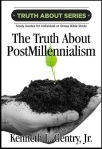
By Ken Gentry
A group Bible study guide for explaining the optimistic prophetic hope for this world to be accomplished before Christ’s Second Coming. Establishes the postmillennial system in both the Old and New Testaments. Touches on key eschatological issues, such as creation, covenant, interpretive methodolgy, the great tribulation, the Book of Revelation, the Jewish Temple, and more. It presents and answers the leading objections to postmillennialism.Twelve chapters are ideal for one quarter of Sunday School.
See more study materials at: www.KennethGentry.com
Our Lord employs it twice elsewhere in his explanations of the parables of the tares and the drawn net (Matt. 13:39, 40, 49). In the former he declares that “the harvest is the end of the world,” and explains that to mean that, as, “the tares are gathered up and burned with the fire; so shall it be in the end of the world; the Son of Man shall send forth his angels, and they shall gather out of his kingdom all things that cause stumbling, and them that do iniquity, and shall cast them into the furnace of fire: there shall be weeping and gnashing of teeth; then shall the righteous shine forth as the sun in the kingdom of their Father.” In the latter he explains that in the end of the world” the angels shall come forth, and sever the wicked from among the righteous, and shall cast them into the furnace of fire: there shall be the weeping and the gnashing of teeth.” “The end of the world” here is clearly the last judgment and the consummation of the kingdom.
The phrase is used again by our Lord’s disciples when they inquired of him; “What shall be the sign of thy coming and of the end of the world?” (Matt. 24:3). Here the Second Coming of our Lord and the end of the world are treated as a single event an identification in which our Lord acquiesces when, with obvious back reference to it, he speaks (vv. 6, 14) of the time of “the end” as of what he has yet to explain to them in response to their question.”The end of the world”then is, as Alford explains it, “the completion of the state of time” after which “time shall be no more.” So long as time endures, so long the commission of the Church to disciple the nations by baptism and instruction continues in force.
It cannot be said, indeed, that the mere command to the Church to disciple all nations carries with it as a necessary implication that, before time ceases, all the nations shall have been actually discipled. This much, however, is certainly included in the command:That the goal set before the Church in its evangelistic work, the object for which it is to labor, and the end by the accomplishment of which alone its task may be fulfilled, is “the discipling of all nations.” Under this commission the Church cannot set itself a lighter task or content itself with a lesser achievement. Least of all can it take refuge in the prediction of our Lord (Matt. 24:14; cf. Luke 24:47) that “this gospel of the kingdom shall be preached in the whole world for a testimony unto all the nations” before “the end” comes, as if nothing more could be asked of it but to bear an unavailing testimony to Christ before all nations.
Duty is not to be determined by predictions but by commands, and the command is not to preach the gospel as a testimony unto the nations, but, by means of the gospel, to disciple all nations. The appeal would, in any case, be meaningless. It is not said in the prediction that the testimony shall be unavailing. It is simply predicted that the gospel shall be faithfully preached in all the world before the end. From it we may learn that this much at least shall be accomplished, and there is nothing in it to forbid either the hope or the assurance that much more will be accomplished.
And elsewhere we are given firm ground for both the hope and the assurance. Even in the Great Commission, the promise annexed, “And lo, I am with you,” surely implies something more than that the power of the Lord will sustain his followers in the trials and disappointments of the heavy task laid upon them. There certainly throbs through it an intimation that because he is always with them in their work, they shall meet with some measure of success in it. What this measure of success shall be, we are told elsewhere. There is the parable of the mustard seed, intimating that small as it was in its beginning, the Kingdom of Heaven is to grow into a great tree in the branches of which all the birds of heaven shall lodge. And there is the parable of the leaven, which declares that though it was at the first but a speck of leaven, apparently lost in three whole measures of meal, yet by its power at last shall “all be leavened” (Matt. 13:31–33). And there is Paul’s clear, didactic statement that “the fullness of the Gentiles shall come in; and so all Israel shall be saved” (Rom. 11:25, 26), importing nothing less than a worldwide salvation.
The Timing of the Lord’s Return
Let us look for a moment at another line of representations. What do the Scriptures teach us of the time of our Lord’s return? Those men in white apparel who stood by the disciples as they gazed into the heavens into which their master had disappeared assured them that he would come again, but said nothing of when he would do so (Acts 1:10; cf. 7). But Peter who witnessed this scene informs us in his very first sermon, the great Pentecostal discourse, that Jesus, having, unlike David, ascended into heaven, has there taken his seat on the throne of the universe, at the right hand of God, and that he will remain in heaven upon his throne until all his enemies have been made the footstool of his feet (Acts 2:35; cf. Heb. 10:12, 13; 1 Cor. 15:25). All conflict, then, will be over, the conquest of the world will be complete, before Jesus returns to earth. He does not come in order to conquer the world to himself; he comes because the world has already been conquered to himself. In quite similar fashion this same Peter in his very next sermon (Acts 3:21) defines the time of our Lord’s return as at the end of the world. “The heavens must receive him,” he tells us, “until the time of the restoration of all things.” The allusion is to the re-creation of the heavens and the earth, the “regeneration” that our Lord himself identifies with the last judgment (Matt. 19:28).

Postmillennialism Made Easy (by Ken Gentry)
Basic introduction to postmillennialism. Presents the essence of the postmillennial argument and answers the leading objections. And all in a succinct, introductory fashion.
See more study materials at: www.KennethGentry.com
Accordingly this same Peter, when men began to fret because the Lord — in their opinion — unduly delayed his coming, intimates that, though the mills of God may seem to grind slowly, they grind exceedingly surely (2 Pet. 3:4–8) and reaffirms that here will certainly come in its own good time that day of the Lord “in which the heavens shall pass away with a great noise, and the elements shall be dissolved with fervent heat, and the earth and the works that are therein shall be burned up” (2 Pet. 3:10). This, according to him, is the coming of the Lord; and this is the consummation of all things. Where is there place for a subsequent earthly dispensation?
So we might pass from representation to representation until well nigh the whole substance of the New Testament was reviewed. Enough has doubtless been said to show that the assumption that the dispensation in which we live is an indecisive one, and that the Lord waits to conquer the world to himself until after he returns to earth, employing then new and more effective methods then he has set at work in our own time, is scarcely in harmony with the New Testament point of view. According to the New Testament, this time in which we live is precisely the time in which our Lord is conquering the world to himself; and it is the completion of his redemptive work, so sets the time for his return to earth to consummate his Kingdom and establish it in its eternal form.
December 30, 2022
THE GOSPEL, SECOND COMING & ‘THIS AGE’ (1)
PMW 2022-099 by B. B. Warfield

Gentry note:
This article (under the shorter title “The Gospel and the Second Coming”) is from volume 1 of The Selected Shorter Writings of B. B. Warfield. It gives Warfield’s brief argument for postmillennialism. It also shows that this theological giant back in the early 1900s recognized the two-age structure of redemptive history (“this age” and “the coming age”). This is significant in that some current-day writers wrongly believe is an amillennial construct, despite being held by Greg Bahnsen, Keith Mathison, me (!) and others. Though I do not agree with ever angle he presents within, here is Warfield’s insightful article.
The Gospel, Second Coming & “This Age”
The Millennium
The term “millennium” has entered Christian speech under the influence of the twentieth chapter of the book of Revelation. From that passage, imperfectly understood, there has also been derived the idea that is connected with this term. We say, from that passage imperfectly understood. For the book of Revelation is a symbolic book; that is to say, what it describes it describes not directly but indirectly, through the medium of symbols. To take its description literally is therefore to substitute the symbol for the reality. That is what is done when the opening verses of the twentieth chapter are read as if they predicted a period of long duration in the earthly history of the Church, in which Satan is to deceive the nations no more and the resurrected martyrs are to live and reign with Christ.
What is meant to be conveyed to us by this beautiful description of the holy peace of Christ’s saints is probably not prophetic knowledge of an episode in the earthly history of the Church, but a deeper sense of the bliss of Christ’s people “safe penned in Paradise.” It is what is called “the intermediate state, “in other words, which is here symbolically depicted. The seer wishes us to bear in mind the whole Church of Christ as it exists during these long years before the blessed hope of the consummated Kingdom is realized. There is the Church struggling here below — the “militant Church” we may call it; the triumphing Church he would rather teach us to call it — or the essence of his presentation is not that there is continual strife here to be endured, but that there is continuous victory here to be won.
The picture of this conquering Church is given us in the nineteenth chapter. But there is also the Church waiting there above, but not waiting merely, but living and reigning with Christ, free from all strife and safe from all assaults of the evil one. This is depicted for us in the opening verses of the twentieth chapter. Not the one only, but both together — the Church militant and the Church expectant — constitute Christ; and not the one alone but both together pass unscathed through the great trial (the latter part of chapter 20) to inherit the new heaven and new earth (chapter 21). John is here only saying in symbols what Paul says in more direct language when he tells us that, whether we wake or sleep, we shall all live together with our Lord Jesus Christ in that great day when death is swallowed up in victory (1 Thess. 4:15; 5:10; 1 Cor. 15:39 ff.).
He Shall Have Dominion (paperback by Kenneth Gentry)
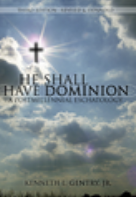
A classic, thorough explanation and defense of postmillennialism (600+ pages). Complete with several chapters answering specific objections.
See more study materials at: www.KennethGentry.com
The Millennial Camps
Pre-millennial, Post-millennial, are therefore unfortunate terms, embodying, and so perpetuating, a misapprehension of the bearing of an important passage of Scripture. They are not, however, on that account meaningless, and the antithesis of the view which they express is neither imaginary nor unimportant. The Scriptures do promise to the Church a “golden age,” when the conflict with the forces of evil in which it is engaged has passed into victory; and it is far from a matter of indifference how this “golden age” stands related to the second coming of our Lord. Infelicitous as the names “pre-millennialism” and “post-millennialism” are, they stand for a divergence of view on this important point which has far-reaching consequences.
According to the one view, the second coming of the Lord is the productive cause of the “golden age” of the Church. According to the other, the “golden age” of the Church is the adorning of the bride for her husband and is the preparation for his coming. Otherwise expressed, according to the one view, the mission of the Church, endowed for its work by the manifold gifts of the Spirit, is not to convert the world to Christ, but only to bear witness to the redemptive will of God, not meanwhile to be exerted in its full power, but to wait for its real triumph for a future dispensation in which it operates by means of different instrumentalities. While according to the other view, precisely what the risen Lord, who has been made head over all things for his Church, is doing through these years that stretch between his First and Second Comings, is conquering the world to himself; and the world is to be nothing less than a converted world.
The mere statement of the antithesis suggests its resolution. For surely it is the burden of the New Testament that Jesus Christ, the propitiation for the sins of the whole world, has been sent by the Father into the world not to judge the world, but that the world should be saved through him (1 John 2:2; John 3:17). That is to say, this is his definite mission, not to judge but to save, and he has come to be the Savior of nothing less than the world (1 John 4:14); and in fulfillment of this mission he has sent those whom the Father gave him into the world, even as the Father sent him into the world (John 17:18). As is his wont?

The Harrowing of Hell (by Jay Rogers)
This postmillennial book examines the power of the Gospel, not only to overcome all opposition, but to rise far above the powers of hell. The term “Harrowing of Hell” refers to idea that Christ descended into Hell, as stated in the Apostles’ Creed.
For more Christian educational materials: www.KennethGentry.com
Paul puts the whole matter in a nutshell. What has been given to us who are charged with preaching the gospel is, he tells us, distinctively the ministry of reconciliation, and it is the ministry of reconciliation for the specific reason that God was reconciling the world with himself in Christ (2 Cor. 5:19). Every word here must be taken in its full meaning. The ministry that Paul exercised, and which everyone who follows him in proclaiming the gospel exercises with him, is distinctively the ministry of reconciliation. It has as its object, and is itself the proper means of, that actual reconciliation of the whole world.
The Acceptable Time
That its full point may be given to this great declaration, we should go on to observe that Paul proceeds at once to proclaim that therefore because it is this ministry of reconciliation that has been committed to us the period of the preaching of the gospel is “the acceptable time” and “the day of salvation” predicted by the prophets. His meaning, when he cries, “Behold, now is the acceptable time, behold, now is the day of salvation,” is not, as it has sometimes been strangely misunderstood, that the day in which we may find acceptance with God is swiftly passing by, but rather that now at length that promised day of salvation has fully come. Now, this time of the preaching of the gospel of reconciliation is by way of eminence the day of salvation. It is not a time in which only a few, here and there, may be saved, while the harvest is delayed. It is the very harvest time itself in which the field is being reaped. And the field is the world.
The implication of a declaration like this is, of course, that God’s saving activities have now reached their culmination; there is nothing beyond this. This implication is present throughout the whole New Testament. It pervades, for example, the Epistle to the Hebrews, the burden of which is that in this dispensation the climax of God’s redemptive work has been attained, and there is nothing to be hoped for after it. In his Son and in the salvation provided in his Son God has done his ultimate. This note is already struck in the initial verses of the epistle and swells thence onward. Accordingly, these days of the Son and his word are explicitly designated “the end of these days” (Heb. 1:2), a phraseology running through the New Testament in the various forms of “the end times” (1 Pet. 1:20), “the last days” (Acts 2:17; 2 Tim. 3:1; James 5:3; 2 Pet. 3:3), “the last time” (Jude 18), “ the last hour” (1 John 2:1 8).
These “last days” may themselves terminate in a more pointedly “last day” (John 6:39; 11:24) or “last time” (1 Pet. 1:5) — the very last of the last — but just because they are the last they cannot be succeeded by any day or any time or season whatever. They close what is called “this world’ or “this age” and are followed only by “the world or age to come,” which is what we commonly call “eternity.” In the face of this stated designation of the period of our Lord’s first coming (Heb. 1:2; 1 Pet. 1:20) and of the outpouring of the Spirit (Acts 2:17) as the last, it will be hard to maintain that there remains another and different earthly dispensation to be lived through before the end comes. And the difficulty is further increased when we observe that The Second Coming of the Lord (Matt. 24:3–6; cf. 1 Cor. 15:24) is identified with this “end” (cf. Matt. 24:6–14; Mark 13:7; Luke 21:9; 1 Cor. 15:24.
To be continued (unless the Rapture occurs in which case I will withdraw all my theories).
December 27, 2022
OBJECTIONS TO JOHN’S “NEAR” STATEMENTS (3)
 PMW 2022-097 By Kenneth L. Gentry, Jr.
PMW 2022-097 By Kenneth L. Gentry, Jr.
John states in his opening of Revelation that the events within “must soon take place” (Rev 1:1) because “the time is at hand” (Rev 1:3). This has caused commentators to trip all over themselves to explain what John “really” meant. In the preceding articles I reviewed six proposed answers, starting with those that are the least likely.
I will now present the final four answers in this article. These are the most reasonable ones. But of course, only one of them will be the correct one. And since it is the correct one, I have decided to choose it as my own.
7. The events are certain
The events are certain irrespective of when they occur. S. S. Smalley (27) states that “this phrase indicates the sure accomplishment of God’s purposes, rather than a ‘hasty consummation’ of history.” L. Brighton (642–43) concurs: “The events described will certainly take place: human evil and the resulting sufferings under God’s judgment, and the church of Christ completing her mission. It is necessary that these events take place.”
But again, John could have better expressed this view by simply stating that he was referring to “the things which must take place.” The word “soon” simply confuses the matter. Or he could have used the simple future: “the things which will take place.” Or he could have used amen to affirm its certainty, especially since John is fond of amen both in Rev (1:6, 7; 3:14; 5:14; 7:12; 19:4; 22:20, 21), as well as in his Gospel where he always doubles it (25 x): “the things which must take place. Amen.”
Four Views on the Book of Revelation
(ed. by Marvin Pate)
Helpful presentation of four approaches to Revelation. Ken Gentry writes the chapter on the preterist approach to Revelation, which provides a 50 page survey of Revelation .
See more study materials at: www.KennethGentry.com
8. John speaks from the future
G. R. Beasley-Murray emphasizes “imminence” (168) and “no more delay” (170) but not for the original audience. Actually “in his vision John stands near the close of the period of messianic judgments” (Beasley-Murray 170). Thus, he sees John as speaking from within the future context when the events are about to explode on the seen.
This is highly unlikely for John opens his book with these words of temporal nearness before anyone knows what he will be saying. And even before he gets caught up “in the Spirit” (1:10; 4:1–2) or transported into the scenes (17:1; 21:9–10). This approach might be more plausible if he said something to the effect: “I was carried in the Spirit into the future to see things that were soon to come to pass.” Or: “the Spirit entered me and set me in the Day of the Lord where I saw things that were soon to take place.” Besides, in 1:3 he blessed the original reader of Rev and the original hearers who would “heed the things which are written in it; for the time is near” (1:3). Surely the time was near for the reader and hearers.
9. The events are inaugurated
The events have already been inaugurated and are gradually unfolding through history. G. K. Beale (182) presents this view, which is quite widely held in the current scholarly discussion: “the focus of ‘quickness’ and ‘’nearness’ in vv 1–3 is primarily on inauguration of prophetic fulfillment and its ongoing aspect, not on nearness of consummated fulfillment, though the latter is secondarily in mind as leading from the former.” Thus, “the beginning of fulfillment and not final fulfillment is the focus.”
G. Osborne (55) agrees: “In salvation history the events indicated in the book have already begun to ‘come to pass’ and await the final consummation.” This is basically the view held by G. R. Beasley-Murray (46), J. P. M. Sweet (58), S. Kistemaker (77), and V. Poythress (70).
This approach is semi-preteristic and acceptable as a partial answer to the question of John’s meaning. But its application by scholars is generally rather nebulous in allowing recurring events throughout history continually to unfold. John’s terminology, however, seems more concrete and constraining. Indeed, he uses the aorist infinitive genesthai (“take place,” i.e., come to be) which should be translated “must have come to pass” (H. Alford 545). This dei . . . genesthai wording occurs seven times in Scripture (including 1:1; 22:6) and signifies fulfillment, not the beginning of fulfillment. It speaks of the fulfillment of Scripture prophecies of Jesus’ death (Mt 26:64) and the wars and rumors of wars that must occur before the “end” (Mk 13:7; Lk 21:9). (Rev 4:1 cannot serve as evidence one way or the other because it is a part of the question as to whether the things in Rev must occur soon.)
As I will show below in defending the preteristic understanding of the phrase here, John expects the actual fulfillment of the overwhelming majority of his prophecies. In fact, in only one place does he glance into the distant future to reveal the long-term consequences of its first-century fulfillment: in 20:1–15. But there he expressly states that the events will not occur soon, for he states that some of them will transpire after 1000 years are “completed” (20:3, 5, 7).
[image error]For more information and to order click here.
" data-image-caption="" data-medium-file="https://postmillennialismtoday.files...." data-large-file="https://postmillennialismtoday.files...." class="alignright size-full wp-image-209" src="https://postmillennialismtoday.files...." alt="Navigating the Book of Revelation: Special Studies on Important Issues" >Navigating the Book of Revelation (by Ken Gentry)
Technical studies on key issues in Revelation, including the seven-sealed scroll, the cast out temple, Jewish persecution of Christianity, the Babylonian Harlot, and more.
See more study materials at: www.KennethGentry.com
10. The events will occur soon
The events will occur soon — within the lifetime of John’s audience. P. Carrington (vii) expresses this approach clearly: “When the Revelation was written it was naturally accepted as an account of current events and of events ‘shortly to come to pass’; that is how it describes itself, and that is how it was naturally taken.” He later states: “we cannot, however, do justice to his very plain opening statement (cf. 1.3; iv:1; xxii. 10) by saying that he foresaw a long series of events covering centuries, which could be described as imminent because they were to begin shortly. Whatever earthly realities correspond to John’s symbols, he expected them to be accomplished quickly in their entirety” (Carrington 12).
M. Stuart (1:5) calls this the “plain and obvious sense” of the phrase. Kurt Aland (1985: 1:88) observes:
In the original text, the Greek work used is tachu, and this does not mean “Soon,” in the sense of “sometime,” but rather “now,” “immediately.” Therefore, we must understand Rev. 22:12 in this way: “I am coming now, bringing my recompense.” The concluding word of Rev. 22:20 is: “He who testifies to these things says, ‘surely I am coming soon.” Here we again find the word tachu, so this means: I am coming quickly, immediately. This is followed by the prayer: “Amen. Come, Lord Jesus!” . . . The Apocalypse expresses the fervent waiting for the end within the circles in which the writer lived — not an expectation that will happen at some unknown point X in time (just to repeat this), but one in the immediate present.
F. W. Farrar (1884: 432) captures the frustration preterists feel when interacting with the alternative positions: “it is curious to see with what extraordinary ease commentators explain the perfectly simple [un]ambiguous expression ‘speedily’ (en tachei), to mean any length of time which they may choose to demand.” Indeed, the “language is simply meaningless if it is to be so manipulated by every successive commentator as to make the words ‘speedily’ and ‘near’ imply any number of centuries of delay.” For the preterist “the primary focus is on John’s own generation” (I. Boxall 24).
In addition to Carrington, Stuart, Farrar, and Boxall, this view is held by F. J. A. Hort (6), W. Milligan (2), M. S. Terry (276), J. E. Adams (50), J. M. Ford (373), D. Chilton (52), E. Corsini (72), and B. Malina (31).
December 23, 2022
CHRISTMAS AND POSTMILLENNIALISM
 PMW 2022-097 by Kenneth L. Gentry, Jr.
PMW 2022-097 by Kenneth L. Gentry, Jr.
Christmas is here, and quite appropriately it will be followed by a new year. Since Christ came to effect a new creation!
We must not forget the message of Christmas; we must take it with us in the new year God is granting us. So as we enter this season, let us consider the postmillennial hope embedded in Christmas. Unless my memory fails me, Bing Crosby sang: “I’m Dreaming of a Postmillennial Christmas.” If he did not, he should have! Whereas Elvis was apparently an amillennialist when he sang: “I’ll Have a Blue Christmas.” Which might explain the howling of the Jordanaires in the background of this song.
Postmillennialists can easily use Christmas texts to present the postmillennial hope. In doing such, they show that Christmas should not simply create a momentary joy as we turn our attentions away from our problems for a brief period. Rather Christmas is deeply embedded in the postmillennial hope.
One of the key prophetic texts that speaks of the coming incarnation and the resulting story of Christmas is Isaiah 9:6-7. There we read:
“For a child will be born to us, a son will be given to us; And the government will rest on His shoulders; And His name will be called Wonderful Counselor, Mighty God, Eternal Father, Prince of Peace. There will be no end to the increase of His government or of peace, On the throne of David and over his kingdom, To establish it and to uphold it with justice and righteousness From then on and forevermore. The zeal of the Lord of hosts will accomplish this.”
To understand this passage contextually, we must note the close connection between the birth of “the son” (his redemptive humiliation, v 6) and his receiving universal government (at his exaltation at the resurrection/ ascension). The promise is that this kingdom will grow, issuing forth in peace (v 7). When Messiah comes into the world he does so to receive a kingdom. The preceding context points also to Christ’s first coming as inaugurating this prophecy’s fulfillment. The reference in verse 2 to the people in darkness who see a great light is fulfilled in Christ’s ministry (Mt 4:16). In fact, the great light is Christ who is the light of the world (Jn 8:12; 12:46).
The Climax of the Book of Revelation (Rev 19-22)
Six lectures on six DVDs that introduce Revelation as a whole, then focuses on its glorious conclusion. Provides an important, lengthy Introduction to Revelation also.
See more study materials at: www.KennethGentry.com
In Isaiah 9:3 the Lord promises to multiply his people Israel. This is according to the Abrahamic Covenant’s promise of a great seed and influence among the nations. God will accomplish this by calling the Gentiles to be the seed of Abraham (Gal 3:29). This involves their ingrafting into Israel’s stock (Ro 11:16–19), the merging of Jew and Gentile into one body (Eph 2:11–17). The increase of Israel’s joy (v 3) indicates the joy in the Savior’s coming (Lk 2:10; Jn 3:29). According to the New Testament, Christ brings joy to his people (Jn 15:11; 16:20ff); and where Christianity goes, joy follows (Ac 8:8; 13:52; 15:3; Ro 14:17; 15:13; 1 Pe 1:8; 1Jn 1:4). As in Isaiah 2:3–4 Christ’s coming results in oppression and war ceasing (vv 4–5), which Isaiah portrays in the burning of soldiers’ garments as a symbol that they will no longer be needed. This is similar to the earlier casting off of swords (Isa 2:4).
Christ’s reign over his kingdom begins at his first coming (Mt 4:17; 12:28) and will gradually increase over time (Mt 13:31–33). In prophecy Christ appears as the son or branch of David (Jer 23:5; 33:13), or as David himself (Jer 30:9; Eze 34:23, 23; 37:24; Hos 3:5). After his resurrection he ascends to David’s throne (Ac 2:30–31), which represents God’s throne (1Ch 28:5; 29:23). His reign brings peace, for he is the “Prince of Peace” (Isa 9:6). Calvin puts it well in his commentary on Isaiah (vol. 1, p. 96). This peace grows incrementally through history in that Christ “extends its boundaries far and wide, and then preserves and carries it forward in uninterrupted progression to eternity.”
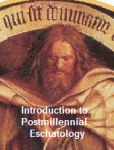
Introduction to Postmillennial Eschatology (10 mp3 lectures)
Southern California Center for Christian Studies seminar.
Lecture presentations and some classroom interaction.
Very helpful definition, presentation, and defense of postmillennialism.
See more study materials at: www.KennethGentry.com
December 22, 2022
THE WORD BECAME FLESH
By Ardel B. Caneday
 As the darkness of winter deepens, we are amid the season we Christians call Advent. Advent is the celebration of the dawning of the True Light in the arrival of Jesus, the Messiah, conceived by a young virgin whose birth pangs brought into this dark and hostile world God’s Son who would become the Savior of the world. Yet do we give adequate consideration to the wonder and daily significance of Advent?
As the darkness of winter deepens, we are amid the season we Christians call Advent. Advent is the celebration of the dawning of the True Light in the arrival of Jesus, the Messiah, conceived by a young virgin whose birth pangs brought into this dark and hostile world God’s Son who would become the Savior of the world. Yet do we give adequate consideration to the wonder and daily significance of Advent?
Celebrations of Advent feature Matthew’s and Luke’s Gospels because both include narratives concerning the holy conception and birth of our Lord to the Virgin Mary. Also, both Matthew and Luke provide genealogical records that respectively reach back to Abraham, the God-appointed father of all believers, and to Adam, our disobedient ancestor whose sin brought the curse of death and darkness to us all.
The Advent’s Origin—In the Beginning
Tending to be overshadowed during Advent are Mark’s and John’s Gospels which present neither a birth narrative nor a genealogy. Nevertheless, they also contend that their accounts concerning Jesus of Nazareth originate from the Old Testament, though with different beginning points. If Mark’s Gospel draws us to Isaiah’s prophecy as “the beginning of the gospel of Jesus Christ, God’s Son” (1:1), John’s Gospel reaches farther back in the Old Testament, to the absolute beginning.
John situates his account of the Messiah neither genealogically, like Matthew and Luke, nor geographically, like Mark, in the Judean desert to fulfill Isaiah’s prophecy. Rather, John situates the Messiah eternally. John’s opening words, “In the beginning,” deliberately draw us back to the initial words of Genesis: “In the beginning, God created the heavens and the earth” (1:1). Both Moses’s ancient narrative and John’s Gospel begin not with creation but with the absolute beginning, before creation’s beginning.
“In the beginning was the Word” confronts us to ponder the imponderable—that the uncreated Word had no beginning but was already existing when what was created came into existence. This truth beckons us to acknowledge that the historical advent of Jesus has an eternal antecedent that takes us back beyond “the beginning” of primordial history to the time of no beginning when “the Word was with God, and the Word was God, who was with God in the beginning” (John 1:1–2).
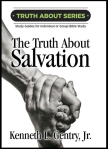 The Truth about Salvation By Ken Gentry
The Truth about Salvation By Ken Gentry
A study guide for personal or small group Bible study. Deals with the Christian doctrine of salvation from a Reformed theological perspective. It opens with a study of God as loving Creator, the shows how the first man fell into sin. Shows God’s righteousness requires that sin be dealt with. Presents Jesus as both God and man so that he can be man’s Savior. Includes review questions and questions for further study.Twelve chapters are ideal for one quarter of Sunday School.
See more study materials at: www.KennethGentry.com
As a title, “the Word” deliberately evokes remembrance of the Genesis creation account spanning six days portraying each phase of God’s creative activity accomplished by God’s speech, “and God said” (1:3, 6, 9, 11, 14, 20, 24, 26). Who but God speaks things into existence? Though Genesis is not a synchronous journal with God’s speaking all things into existence, it is the Creator’s authorized account.
Divine Accommodation: God’s Word in Human Words
The chasm between the Creator and us, his creatures, is vast. So vast, that if God were to speak to us in his divine language, none of us would understand him. At most, we might say, “It thundered” (John 12:29; Job 40:9). When the Creator spoke to Adam, the first man, God did not communicate in a divine language. He condescended to the human level, speaking Adam and Eve’s language and appearing to them in their likeness in form and qualities. God accommodated himself to their human language with human words.
As creatures, it is essential that we acknowledge that God invariably reveals himself to us this way, whether embedded in creation, written in his Word (i.e., the Holy Scriptures from Genesis 1:1 to Revelation 22:21), or incarnate in his Son. Yet, we must affirm that when God condescends to accommodate human likeness, he does so without any sinful tarnishing of thought, word, or deed. Thus, we would be grievously wrong to reason as some do: “God anticipates the future in a way analogous to our own experience.”[1] The fallacy is to forget that we are made after God’s likeness. The error is to project back upon God our creaturely restrictions of qualities we received from him who made us in his image. To regard ourselves as the fundamental reference point for ascribing qualities to God is idolatry which is what the Prophet Isaiah condemns:
You turn things upside down,
as if the potter were thought to be like the clay!
Shall what is formed say to the one who formed it,
“You did not make me”? (Isaiah 29:16)
Throughout the Old Testament, the Creator’s willingness to accommodate himself to his creature’s likeness to make himself known to us prepares for the appointed time when God condescends to take on human likeness in the flesh. Thus, God intentionally inspires the psalmist, David, to compare God to earthly caring fathers.
As a father shows compassion to his children,
so the Lord shows compassion to those who fear him.
For he knows our frame;
he remembers that we are dust (Psalm 103:13–14).
Because God made humans analogous to himself, he delights to be analogized in these appropriate ways by his people—he would not have inspired it if he did not delight in it. He does this because he as the Creator imbued the material and nonmaterial creation with his imprint, reflecting his self-revelatory divine perfections. Made after the Creator’s likeness, we are God’s earthly analogs.[2] Accordingly, God is pleased that we should call him by names obtained from the created realm, names with which the Creator richly endowed and loaned to his creation for this purpose, that his whole creation might resound with his praise.
Lord of the Saved
(by Ken Gentry)
A critique of easy believism and affirmation of Lordship salvation. Shows the necessity of true, repentant faith to salvation.
See more study materials at: www.KennethGentry.com
For example, David’s analogy of Psalm 103 above is fitting because God is pleased to be compared to compassionate earthly fathers because he is the Father “from whom every fatherhood [patrilineage] in heaven and on earth is named” (Ephesians 3:15; cf. Matthew 23:9).[3] The entire created order analogically correlates to God, the uncreated, self-existing, eternal one whose invisible traits, including his eternal power and divine nature, have been readily apparent in everything that the Creator brought into existence (cf. Romans 1:19–20).
Like each Stradivarius violin indelibly bears the signature of its craftsman, so God infused his individual works with his glory. True, no one sees God as he is in himself because he is beyond comprehension and his majestic glory exceeds all human perception. Nevertheless, God reveals himself daily in the symphonic beauty of the vast universe, making it impossible for humans to open their eyes without being constrained to . . . .
To complete the article click: here
The Word Became Flesh: An Advent Meditation from John’s Prologue
December 20, 2022
OBJECTIONS TO JOHN’S “NEAR” STATEMENTS (2)
PMW 2022-096 By Kenneth L. Gentry, Jr.
This is the fourth in a series focusing on the question of the temporal expectation in Revelation.
I am first presenting the attempts of non-preterist interpreters to get around John’s near-term declarations in Rev 1:1, 3; 22:6, 10. Once I have presented these efforts, I will provide extensive exegetical arguments showing that John does focus on the first-century. And then I will eventually answer the question as to whether John ever looks to the distant future.
In my last blog I noted the first two responses to John’s near-term expectations: (1) John was mistaken. (2) John was ambiguous. As you might surmise, I am offering the worst answers first — just to show you how desperate some commentators get over John’s statements. Now I pick up with a third explanation.
3. Revelation is motivational
The events are declared to be soon, but only for dramatic, motivational purposes. Michaels (48) argues that “Christians tend to get nervous about any implication that the Bible might be mistaken. yet a great deal is lost when the striking words soon and the time is near are not given their proper force. The conviction that the end of the world is near is what makes the book of Rev larger than life. . . . The intense awareness of the end of all things infuses the book’s imagery with sharpness and rich color. The announcement that ‘the time is near’ provokes not resignation or a feeling that nothing matters, but on the contrary a kind of jubilation at the preciousness of life and at the world God created and will create anew in the events that must soon take place.” J. L. Resseguie (63) holds a similar view when he states that John is building a sense of “tension” in his dramatic work. J. L. Maier (124) comments that “Jesus, like Godot, is just around a corner that is never turned.”
Perhaps we may suppose that this approach would have infused the book with sharpness and color for its original recipients. But now nineteen hundred years of delay would surely dull that cutting edge and wash out the color considerably. And surely Jesus is not like Samuel Beckett’s Waiting for Godot that depicts the meaninglessness of life.
4. The events will occur rapidly
The events will unfold rapidly whenever they begin to occur. Dispensationalist scholar John Walvoord (35) understands Rev’s opening comment thus: “That which Daniel declared would occur ‘in the latter days’ is here described as ‘soon’ (Gr. en tachei), that is, ‘quickly or suddenly coming to pass,’ indicating a rapidity of execution after the beginning takes place. The idea is not that the event may occur soon, but that when it does, it will be sudden (cf. Luke f18:8; Acts 12:7; 22:18; 25:4; Rom. 16:20). A similar word, tackys, is translated ‘quickly’ seven times in Rev.” Charles Ryrie (13) and LEGNT (610) also hold this view.
This interpretation does not offer any encouragement whatsoever. If the Church must wait hundreds and hundreds of years before the events occur, what is the significance of their finally arriving rapidly? Besides the soon-ness embodied in this phrase occurs again in other expressions in 1:3, 19, and elsewhere. F. D. Mazzaferri well argues: “Though tachos may connote speed rather than imminence, the former makes little sense in terms of 22:10, or in context with engus. Likewise, Jesus’ promise erchomai tachu, is scarcely intelligible, let alone a motivation for perseverance, except in the sense of imminence.” He even notes that in 1:7 “the pres. tense eloquently speaks of imminence in its own right” (Mazzaferri, 237).
The Early Date of Revelation and the End Times: An Amillennial Partial Preterist Perspective
By Robert Hillegonds
This book presents a strong, contemporary case in support of the early dating of Revelation. He builds on Before Jerusalem Fell and brings additional arguments to bear.
See more study materials at: www.KennethGentry.com
5. John is speaking of God’s time
The events will occur soon according to the eternal God’s measure of time. Dispensationalist R. L. Thomas (1:55) recognizes the weakness of Walvoord’s position noting that “to say that relief will come ‘suddenly’ offers no encouragement but to say that it will come ‘soon’ does.” He argues that “when measuring time, Scripture has a different standard from ours. . . . It must be kept in mind that God is not limited by considerations of time in the same way man is (cf. 2 Pet. 3:8).”
L. Morris (46–47) holds a similar view: “We must bear in mind that in the prophetic perspective the future is sometimes foreshortened. In other words the term may refer to the certainty of the events in question. The Lord God has determined them and he will speedily bring them to pass. But this refers to his time, not ours, to the quality of the time rather than the quantity. With him one day is as a thousand years and a thousand years as one day (2 Pet. 3:8).” Indeed, Alford (4:545–46) warns that this statement “must not be urged to signify the events of apocalyptic prophecy were to be close at hand.” According to C. Keener (61) “Revelation functions, therefore, as a “summons to readiness.” G. Osborne (797) agrees: “to God the period between John’s time and ours still connotes ‘soon.’” See also Ocemenius (22), H. B. Swete (2), H. Alford (4:535), M. Vincent (2:407), A. T. Robertson (283), M. R. Mulholland (9), D. W. Hall (11), and R. Stefanovic (57).
How this offers any more encouragement to a severely persecuted Church than Walvoord’s view is not clear. After all, on this view John would be stating: “The events within are imminent, but may in fact take 2000 years before they occur.” In addition I would make a three-fold rebuttal to the possibility that John is speaking of time as does Peter in 2Pe 3:8:
In the first place, Peter expressly states the fact that God views time differently from man. John does not. We cannot go about interpreting all temporal indicators by God’s estimation of time. Secondly, Peter is talking about God, whereas John is giving directives to men. Peter makes a theological statement regarding God and his perception of time; John provides an historical directive to men regarding their unfolding hardships. We must not confuse theological truth about God with historical directives to men. Thirdly, Peter is expressly dealing with the objection that certain prophecies have failed because they have yet to occur: “Know this first of all, that in the last days mockers will come with their mocking, following after their own lusts, and saying, ‘Where is the promise of His coming? For ever since the fathers fell asleep, all continues just as it was from the beginning of creation’” (2 Pe 3:3–4). Peter is facing the slowness of God’s judgment. John, however, is warning suffering Christians (among which he numbers himself, Rev 1:9) about what they must expect. He dogmatically declares repeatedly and in various ways that his prophecies “must soon take place” because “the time is near.”
6. The events are always imminent
The events are imminent in that they could theoretically occur at any minute. Premillennialist R. H. Mounce (41) takes this approach: “John writes that the events that constitute the revelation must ‘soon take place.’ That almost 2,000 year of church history have passed and the end has not yet come poses a problem for some. . . . The most satisfying solution is to take the expression ‘must soon take place’ in a straightforward sense, remembering that in the prophetic outlook the end is always imminent. Time as a chronological sequence is of secondary concern in prophecy. This perspective is common to the entire NT.” Later (404) he writes: “One answer to the problem of this as-yet-unfulfilled expectation is to hold that God is more concerned with the fulfillment of his redemptive purposes than he is with satisfying our ideas of appropriate timing.”
Four Views on the Book of Revelation
(ed. by Marvin Pate)
Helpful presentation of four approaches to Revelation. Ken Gentry writes the chapter on the preterist approach to Revelation, which provides a 50 page survey of Revelation .
See more study materials at: www.KennethGentry.com
B. M. Metzger (105) adds: “In the Christian doctrine of the last things, the imminence of the end is moral rather than chronological: each successive generation, so far as can be known to the contrary, may be the last generation. In that sense the time is always near (22:10).” This views is held by G. E. Ladd (22) and A. F. Johnson (1981: 417).
But against this view we must wonder why John would use time-laden words to express his view of prophecy rather than simply saying these events “must” come about. Indeed, in 22:10 John’s revelatory angel seems intentionally to be reversing Daniel’s heavenly directive which stated: “But as for you, Daniel, conceal these words and seal up the book until the end of time” (Dan 12:4). John’s directive is “Do not seal up the words of the prophecy of this book, for the time is near” (Rev 22:10). Thus, we have the odd situation that around 600 years before John’s day, Daniel was commanded to seal up his prophecy until the end, but John is commanded not to seal up his prophecy for the end is near — though we have now gone over 1900 years into the future.
Besides this understanding of imminency in the futurist scheme is an abuse of the term: Webster’s New Twentieth Century Unabridged Dictionary defines “imminent”: “appearing as if about to happen; likely to happen without delay; impending.” The Oxford English Dictionary defines “imminent”: “Impending threateningly, hanging over one’s head; ready to befall or overtake one; close at hand in its incidence; coming on shortly.” Imminency has no meaning if that which is “imminent” stretches out for 2000 years — or more.
Conclusion
The efforts a re-interpreting John do not end with these six valiant attempts. There are more to come! And they will come “soon.” I promise. Although due to Christmas the final article will be delayed a few days.
December 16, 2022
OBJECTIONS TO JOHN’S “NEAR” STATEMENTS (1)
PMW 2022-095 By Kenneth L. Gentry, Jr.
This is the third of five articles in which I am dealing with the near-term statements opening Revelation in 1:1 and 1:3. In this and the next three I will be responding to objections to the nearness expectations based on these verses and the closing verses in Revelation 22:6 and 22:10. I encourage those interested in Revelation to take account of his opening and concluding statements which are so crucial to understanding John’s message as it was originally received by the seven churches (Rev. 2–3).
Remember that John opens Revelation with two seemingly clear statements:
“The Revelation of Jesus Christ, which God gave Him to show to His bond-servants, the things which must soon take place; and He sent and communicated it by His angel to His bond-servant John.” (Rev 1:1)
“Blessed is he who reads and those who hear the words of the prophecy, and heed the things which are written in it; for the time is near.” (Rev 1:3)
Then he closes his glorious book with two parallel statements, reiterating his point:
“He said to me, ‘These words are faithful and true’; and the Lord, the God of the spirits of the prophets, sent His angel to show to His bond-servants the things which must soon take place.” (Rev 22:6)
“He said to me, ‘Do not seal up the words of the prophecy of this book, for the time is near.’” (Rev 22:10)
These near-term statements have tripped-up commentators over the years. In this article I would like to point out several of the leading attempts to re-interpret John’s introductory and concluding statements. This is an important interpretive endeavor for the postmillennialist because many modern Christians see Revelation’s judgment scenes as contradictory to the postmillennial hope.
The following statements are made by those who do not believe Revelation’s events were near.
1. John was mistaken
The events were expected soon, but John was wrong. M. E. Boring (73) asserts that John’s near-term expectation for “all the events his letter envisions” erred: “Does this mean he was wrong? Yes. Christians who reverence the Bible as Scripture, the vehicle of God’s word, ought not to hesitate to acknowledge that its authors made errors. . . . When John adopted apocalyptic as the vehicle of his message, he adopted its errors as well.” W. J. Harrington (44–45) concurs: “When John declares that the time is near, he means that, in his view, the End is soon. Was he, then, mistaken? In one sense, obviously yes. The end did not happen in his day, nor has it occurred nineteen centuries later. What we might learn from him is a sense of urgency.”
Nigel Turner (1045) agrees, noting that “conservative scholars try to see in this word the meaning ‘quickly’ (i.e. catastrophically) as well as soon, for the simple truth is that the events did not have an immediate fulfillment. James Barr (1984:39) notes that Rev “failed rather spectacularly to deliver on its promise that Jesus would come ‘soon.’” B. Robinson (1988: 16) is more gracious to John but agrees that: “John’s expectation of a speedy winding up of history . . . was premature.” But the meaning really is ‘soon.’”
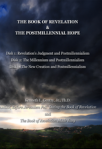 The Book of Revelation and Postmillennialism (Lectures by Ken Gentry)
The Book of Revelation and Postmillennialism (Lectures by Ken Gentry)
In the first of these three 50-minute lectures Gentry explains Revelation’s judgments to show they do not contradict postmillennialism. In the next two lectures he shows how the Millennium and the New Creation themes strongly support the gospel victory hope found in postmillennialism.
See more study materials at: www.KennethGentry.com
W. Buchanan (35–36) puts the matter boldly: “John thought Christians were then near the end of the tribulation, and it would be only a short time before the predestined period would be over and the nation would be free from foreign rule. . . . John was not expecting to wait a thousand years. Based on Daniel, he expected an end to take place within three and one half years. That did not happen, and John made a mistake. That is all there is to it, and no one should try to claim some infallibly correct interpretation that will absolve John of error.”
This approach is unacceptable to those who believe Rev is divinely revealed (as John claims in 1:1, hopefully truthfully). And it is based on a radical misunderstanding of what Rev is really teaching, as we shall see. Furthermore, it certainly would not create a sense of “urgency” but rather a profound sense of disappointment and disgust akin to those who followed William Miller to the mountain top in 1843. Rev should be nothing more than a Qumran-like specimen of failed expectations.
2. John was ambiguous
The events were prophesied to be soon, but as was customary with Israel’s prophets, the special prophetic language is intentionally “ambiguous.” Prophetic ambiguity is intentional and designed to heighten the hearers’ expectations for moral purposes of readiness. Though not applying his discussion to Rev, we may easily see how Scot McKnight’s understanding of Hebrew prophecy would explain John’s nearness imagery. In discussing Jesus’ Gospel statements regarding the nearness of the kingdom and the apocalyptic judgments associated with it, McKnight (1999: 129) writes: “I will argue that Jesus had an imminent expectation and that this view is consistent with the prophetic movement in Israel. His perception was not erroneous. In its limitation, ignorance, and ambiguity, prophetic knowledge is not erroneous knowledge, but it is different from everyday, empirical knowledge.”
Though McKnight (129) argues against employing “exegetical gymnastics” to evade the import of prophetic near-term pronouncements, his approach seems to encourage just that. John’s statements are quite clear, repeated, and balanced with one another. He opens (1;1, 3) and closes (22:6, 10) with these nearness statements. He never declares that he does not know the time; he does not use ambiguous language in making his statements. Any prophetic-ambiguity argument will not suffice to discount the approaching judgments.
Conclusion
These are the most disappointing of the scholarly efforts to understand John’s near-term indicators. But they are not the only ones that miss the mark. Come again and discover some more vain attempts at ridding John of his point of view.

The Book of Revelation Made Easy
(by Ken Gentry)
Helpful introduction to Revelation presenting keys for interpreting. Also provides studies of basic issues in Revelation’s story-line.|
See more study materials at: www.KennethGentry.com
December 13, 2022
NEARNESS IN REVELATION 1:3
PMW 2022-091 by Kenneth L. Gentry, Jr.

In the preceding article I began simply listing the Bible translations of Revelation 1:1 and 1:3 to show that all versions of these verses clearly speak of the nearness of its fulfillment. Then following these two articles, I will present three articles answering the leading objections to the nearness of the Revelation events. When I speak at conferences on Revelation, I always challenge the attendees to look up these verses in any reputable version and note the clear near-term implications.
So, in this article we are now ready to list the versions and how they translate Revelation 1:3
Rev 1:3 in the Versions
(see below for identity of these abbreviated translation names):
KJ21
Blessed is he that readeth, and they that hear the words of this prophecy, and keep those things which are written therein; for the time is at hand.
ASV
Blessed is he that readeth, and they that hear the words of the prophecy, and keep the things that are written therein: for the time is at hand.
AMP
Blessed (happy, prosperous, to be admired) is he who reads and those who hear the words of the prophecy, and who keep the things which are written in it [heeding them and taking them to heart]; for the time [of fulfillment] is near.
AMPC
Blessed (happy, to be envied) is the man who reads aloud [in the assemblies] the word of this prophecy; and blessed (happy, to be envied) are those who hear [it read] and who keep themselves true to the things which are written in it [heeding them and laying them to heart], for the time [for them to be fulfilled] is near.
BRG
Blessed is he that readeth, and they that hear the words of this prophecy, and keep those things which are written therein: for the time is at hand.
CSB
Blessed is the one who reads aloud the words of this prophecy, and blessed are those who hear the words of this prophecy and keep what is written in it, because the time is near.
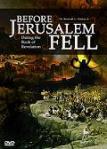
Before Jerusalem Fell Lecture DVD by Ken Gentry
A summary of the evidence for Revelation’s early date. Helpful, succinct introduction to Revelation’s pre-AD 70 composition.
See more study materials at: www.KennethGentry.com
CEB
Favored is the one who reads the words of this prophecy out loud, and favored are those who listen to it being read, and keep what is written in it, for the time is near.
CJB
Blessed are the reader and hearers of the words of this prophecy, provided they obey the things written in it! For the time is near!
CEV
God will bless everyone who reads this prophecy to others, and he will bless everyone who hears and obeys it. The time is almost here.
DARBY
Blessed [is] he that reads, and they that hear the words of the prophecy, and keep the things written in it; for the time [is] near.
DLNT
Blessed is the one reading, and the ones hearing the words of this prophecy and keeping the things having been written in it, for the time is near.
DRA
Blessed is he, that readeth and heareth the words of this prophecy; and keepeth those things which are written in it; for the time is at hand.
ERV
Great blessings belong to the person who reads the words of this message from God and to those who hear this message and do what is written in it. There is not much time left.
EHV
Blessed is the one who reads the words of this prophecy and blessed are those who hear it and hold on to the things written in it, because the time is near.
ESV
Blessed is the one who reads aloud the words of this prophecy, and blessed are those who hear, and who keep what is written in it, for the time is near.
ESVUK
Blessed is the one who reads aloud the words of this prophecy, and blessed are those who hear, and who keep what is written in it, for the time is near.
EXB
·Blessed [Happy] is the one who reads the words of ·God’s message [L the prophecy], and ·blessed [happy] are the people who hear this message and ·do [keep; obey] what is written in it [C the context envisioned is a leader reading to a congregation]. ·The time is near when all of this will happen [L For the time is near].
GNV
Blessed is he that readeth, and they that hear the words of this prophecy, and keep those things which are written therein: for the time is at hand.
GW
Blessed is the one who reads, as well as those who hear the words of this prophecy and pay attention to what is written in it because the time is near.
GNT
Happy is the one who reads this book, and happy are those who listen to the words of this prophetic message and obey what is written in this book! For the time is near when all these things will happen.
HCSB
The one who reads this is blessed, and those who hear the words of this prophecy and keep what is written in it are blessed, because the time is near!
ICB
The one who reads the words of God’s message is happy. And the people who hear this message and do what is written in it are happy. The time is near when all of this will happen.
ISV
How blessed is the one who reads aloud and those who hear the words of this prophecy and obey what is written in it, for the time is near!
PHILLIPS
Happy is the man who reads this prophecy and happy are those who hear it read and pay attention to its message; for the time is near.
JUB
¶ Blessed is he that reads and those that hear the words of this prophecy and keep those things which are written therein, for the time is at hand.
KJV
Blessed is he that readeth, and they that hear the words of this prophecy, and keep those things which are written therein: for the time is at hand.
AKJV
Blessed is he that readeth, and they that hear the words of this prophecy, and keep those things which are written therein: for the time is at hand.
LEB
Blessed is the one who reads aloud and blessed are those who hear the words of the prophecy and observe the things written in it, because the time is near!
TLB
If you read this prophecy aloud to the church, you will receive a special blessing from the Lord. Those who listen to it being read and do what it says will also be blessed. For the time is near when these things will all come true.
MSG
How blessed the reader! How blessed the hearers and keepers of these oracle words, all the words written in this book! Time is just about up.
MEV
Blessed is he who reads and those who hear the words of this prophecy and keep those things which are written in it, for the time is near.
MOUNCE
Blessed is the one who reads aloud the words of this prophecy, and those who hear and keep what is written in it, for the time is near.
NOG
Blessed is the one who reads, as well as those who hear the words of this prophecy and pay attention to what is written in it because the time is near.
NABRE
Blessed is the one who reads aloud and blessed are those who listen to this prophetic message and heed what is written in it, for the appointed time is near.
NASB
Blessed is the one who reads, and those who hear the words of the prophecy and keep the things which are written in it; for the time is near.

Blessed Is He Who Reads: A Primer on the Book of Revelation By Larry E. Ball
A basic survey of Revelation from an orthodox, evangelical, and Reformed preterist perspective. Ball understands John to be focusing on the destruction of Jerusalem and the temple in AD 70. Insightful. Easy to read.
For more Christian studies see: www.KennethGentry.com
NASB1995
Blessed is he who reads and those who hear the words of the prophecy, and heed the things which are written in it; for the time is near.
NCB
Blessed is the one who reads the words of this prophecy, and blessed are those who keep what is written in it, for the appointed time is near.
NCV
Blessed is the one who reads the words of God’s message, and blessed are the people who hear this message and do what is written in it. The time is near when all of this will happen.
NET
Blessed is the one who reads the words of this prophecy aloud, and blessed are those who hear and obey the things written in it, because the time is near!
NIRV
Blessed is the one who reads out loud the words of this prophecy. Blessed are those who hear it and think everything it says is important. The time when these things will come true is near.
NIV
Blessed is the one who reads aloud the words of this prophecy, and blessed are those who hear it and take to heart what is written in it, because the time is near.
NIVUK
Blessed is the one who reads aloud the words of this prophecy, and blessed are those who hear it and take to heart what is written in it, because the time is near.
NKJV
Blessed is he who reads and those who hear the words of this prophecy, and keep those things which are written in it; for the time is near.
NLV
The man who reads this Book and listens to it being read and obeys what it says will be happy. For all these things will happen soon.
NLT
God blesses the one who reads the words of this prophecy to the church, and he blesses all who listen to its message and obey what it says, for the time is near.
NMB
Happy is he who reads and those who hear the words of the prophecy, and keep those things that are written therein. For the time is at hand.
NRSVA
Blessed is the one who reads aloud the words of the prophecy, and blessed are those who hear and who keep what is written in it; for the time is near.
NRSVACE
Blessed is the one who reads aloud the words of the prophecy, and blessed are those who hear and who keep what is written in it; for the time is near.
NRSVCE
Blessed is the one who reads aloud the words of the prophecy, and blessed are those who hear and who keep what is written in it; for the time is near.
NRSVUE
Blessed is the one who reads the words of the prophecy, and blessed are those who hear and who keep what is written in it, for the time is near.
NTE
God’s blessing on the one who reads the words of this prophecy, and on those who hear them and keep what is written in it. The time, you see, is near!
OJB
Ashrey (Blessed, Happy) is the one reading and the ones hearing the divrei hanevu’ah (words of [this] prophecy) and remaining shomer regarding what is written in it, for karov (near) is HaYom [the time of crisis and the events related to the Bias HaMoshiach].
RGT
Blessed is he who reads, and those who hear the words of this prophecy, and keep those things which are written therein; for the time is at hand.
RSV
Blessed is he who reads aloud the words of the prophecy, and blessed are those who hear, and who keep what is written therein; for the time is near.
RSVCE
Blessed is he who reads aloud the words of the prophecy, and blessed are those who hear, and who keep what is written therein; for the time is near.
TLV
How fortunate is the one who reads the words of this prophecy, and those who hear and keep what has been written in it—for the time is near.
VOICE
Blessings come to those who read and proclaim these words aloud; blessings come to those who listen closely and put the prophetic words recorded here into practice. The finale is approaching.
WEB
Blessed is he who reads and those who hear the words of the prophecy, and keep the things that are written in it, for the time is at hand.
WE
God will bless the person who reads the words of this book. God will bless those who hear the words of this book and obey the things written in it.
WYC
Blessed is he that readeth, and he that heareth the words of this prophecy, and keepeth those things that be written in it; for the time is nigh.
YLT
Happy is he who is reading, and those hearing, the words of the prophecy, and keeping the things written in it — for the time is nigh!
Bible versions key
21st Century King James Version (KJ21) Copyright © 1994 by Deuel Enterprises, Inc.; American Standard Version (ASV) Public Domain (Why are modern Bible translations copyrighted?); Amplified Bible (AMP) Copyright © 2015 by The Lockman Foundation, La Habra, CA 90631. All rights reserved.; Amplified Bible, Classic Edition (AMPC) Copyright © 1954, 1958, 1962, 1964, 1965, 1987 by The Lockman Foundation; BRG Bible (BRG) Blue Red and Gold Letter Edition Copyright © 2012 BRG Bible Ministries. Used by Permission. All rights reserved. BRG Bible is a Registered Trademark in U.S. Patent and Trademark Office #4145648; Christian Standard Bible (CSB) The Christian Standard Bible. Copyright © 2017 by Holman Bible Publishers. Used by permission. Christian Standard Bible®, and CSB® are federally registered trademarks of Holman Bible Publishers, all rights reserved. ; Common English Bible (CEB) Copyright © 2011 by Common English Bible; Complete Jewish Bible (CJB) Copyright © 1998 by David H. Stern. All rights reserved. ; Contemporary English Version (CEV) Copyright © 1995 by American Bible Society For more information about CEV, visit http://www.bibles.com and http://www.cev.bible.; Darby Translation (DARBY) Public Domain (Why are modern Bible translations copyrighted?); Disciples’ Literal New Testament (DLNT) Disciples’ Literal New Testament: Serving Modern Disciples by More Fully Reflecting the Writing Style of the Ancient Disciples, Copyright © 2011 Michael J. Magill. All Rights Reserved. Published by Reyma Publishing; Douay-Rheims 1899 American Edition (DRA) Public Domain (Why are modern Bible translations copyrighted?); Easy-to-Read Version (ERV) Copyright © 2006 by Bible League International; Evangelical Heritage Version (EHV) The Holy Bible, Evangelical Heritage Version®, EHV®, © 2019 Wartburg Project, Inc. All rights reserved.; English Standard Version (ESV) The Holy Bible, English Standard Version. ESV® Text Edition: 2016. Copyright © 2001 by Crossway Bibles, a publishing ministry of Good News Publishers.; English Standard Version Anglicised (ESVUK) The Holy Bible, English Standard Version Copyright © 2001 by Crossway Bibles, a division of Good News Publishers.; Expanded Bible (EXB) The Expanded Bible, Copyright © 2011 Thomas Nelson Inc. All rights reserved. ; 1599 Geneva Bible (GNV) Geneva Bible, 1599 Edition. Published by Tolle Lege Press. All rights reserved. No part of this publication may be reproduced or transmitted in any form or by any means, electronic or mechanical, without written permission from the publisher, except in the case of brief quotations in articles, reviews, and broadcasts. ; GOD’S WORD Translation (GW) Copyright © 1995, 2003, 2013, 2014, 2019, 2020 by God’s Word to the Nations Mission Society. All rights reserved.; Good News Translation (GNT) Good News Translation® (Today’s English Version, Second Edition) © 1992 American Bible Society. All rights reserved. For more information about GNT, visit http://www.bibles.com and http://www.gnt.bible.; Holman Christian Standard Bible (HCSB) Copyright © 1999, 2000, 2002, 2003, 2009 by Holman Bible Publishers, Nashville Tennessee. All rights reserved.; International Children’s Bible (ICB) The Holy Bible, International Children’s Bible® Copyright© 1986, 1988, 1999, 2015 by Thomas Nelson. Used by permission.; International Standard Version (ISV) Copyright © 1995-2014 by ISV Foundation. ALL RIGHTS RESERVED INTERNATIONALLY. Used by permission of Davidson Press, LLC.; J.B. Phillips New Testament (PHILLIPS) The New Testament in Modern English by J.B Phillips copyright © 1960, 1972 J. B. Phillips. Administered by The Archbishops’ Council of the Church of England. Used by Permission.; Jubilee Bible 2000 (JUB) Copyright © 2013, 2020 by Ransom Press International ; King James Version (KJV) Public Domain; Authorized (King James) Version (AKJV) KJV reproduced by permission of Cambridge University Press, the Crown’s patentee in the UK.; Lexham English Bible (LEB) 2012 by Logos Bible Software. Lexham is a registered trademark of Logos Bible Software; Living Bible (TLB) The Living Bible copyright © 1971 by Tyndale House Foundation. Used by permission of Tyndale House Publishers Inc., Carol Stream, Illinois 60188. All rights reserved.; The Message (MSG) Copyright © 1993, 2002, 2018 by Eugene H. Peterson; Modern English Version (MEV) The Holy Bible, Modern English Version. Copyright © 2014 by Military Bible Association. Published and distributed by Charisma House. ; Mounce Reverse Interlinear New Testament (MOUNCE) The Mounce Reverse Interlinear
Copyright © 2012 BRG Bible Ministries. Used by Permission. All rights reserved. BRG Bible is a Registered Trademark in U.S. Patent and Trademark Office #4145648; Christian Standard Bible (CSB) The Christian Standard Bible. Copyright © 2017 by Holman Bible Publishers. Used by permission. Christian Standard Bible®, and CSB® are federally registered trademarks of Holman Bible Publishers, all rights reserved. ; Common English Bible (CEB) Copyright © 2011 by Common English Bible; Complete Jewish Bible (CJB) Copyright © 1998 by David H. Stern. All rights reserved. ; Contemporary English Version (CEV) Copyright © 1995 by American Bible Society For more information about CEV, visit http://www.bibles.com and http://www.cev.bible.; Darby Translation (DARBY) Public Domain (Why are modern Bible translations copyrighted?); Disciples’ Literal New Testament (DLNT) Disciples’ Literal New Testament: Serving Modern Disciples by More Fully Reflecting the Writing Style of the Ancient Disciples, Copyright © 2011 Michael J. Magill. All Rights Reserved. Published by Reyma Publishing; Douay-Rheims 1899 American Edition (DRA) Public Domain (Why are modern Bible translations copyrighted?); Easy-to-Read Version (ERV) Copyright © 2006 by Bible League International; Evangelical Heritage Version (EHV) The Holy Bible, Evangelical Heritage Version®, EHV®, © 2019 Wartburg Project, Inc. All rights reserved.; English Standard Version (ESV) The Holy Bible, English Standard Version. ESV® Text Edition: 2016. Copyright © 2001 by Crossway Bibles, a publishing ministry of Good News Publishers.; English Standard Version Anglicised (ESVUK) The Holy Bible, English Standard Version Copyright © 2001 by Crossway Bibles, a division of Good News Publishers.; Expanded Bible (EXB) The Expanded Bible, Copyright © 2011 Thomas Nelson Inc. All rights reserved. ; 1599 Geneva Bible (GNV) Geneva Bible, 1599 Edition. Published by Tolle Lege Press. All rights reserved. No part of this publication may be reproduced or transmitted in any form or by any means, electronic or mechanical, without written permission from the publisher, except in the case of brief quotations in articles, reviews, and broadcasts. ; GOD’S WORD Translation (GW) Copyright © 1995, 2003, 2013, 2014, 2019, 2020 by God’s Word to the Nations Mission Society. All rights reserved.; Good News Translation (GNT) Good News Translation® (Today’s English Version, Second Edition) © 1992 American Bible Society. All rights reserved. For more information about GNT, visit http://www.bibles.com and http://www.gnt.bible.; Holman Christian Standard Bible (HCSB) Copyright © 1999, 2000, 2002, 2003, 2009 by Holman Bible Publishers, Nashville Tennessee. All rights reserved.; International Children’s Bible (ICB) The Holy Bible, International Children’s Bible® Copyright© 1986, 1988, 1999, 2015 by Thomas Nelson. Used by permission.; International Standard Version (ISV) Copyright © 1995-2014 by ISV Foundation. ALL RIGHTS RESERVED INTERNATIONALLY. Used by permission of Davidson Press, LLC.; J.B. Phillips New Testament (PHILLIPS) The New Testament in Modern English by J.B Phillips copyright © 1960, 1972 J. B. Phillips. Administered by The Archbishops’ Council of the Church of England. Used by Permission.; Jubilee Bible 2000 (JUB) Copyright © 2013, 2020 by Ransom Press International ; King James Version (KJV) Public Domain; Authorized (King James) Version (AKJV) KJV reproduced by permission of Cambridge University Press, the Crown’s patentee in the UK.; Lexham English Bible (LEB) 2012 by Logos Bible Software. Lexham is a registered trademark of Logos Bible Software; Living Bible (TLB) The Living Bible copyright © 1971 by Tyndale House Foundation. Used by permission of Tyndale House Publishers Inc., Carol Stream, Illinois 60188. All rights reserved.; The Message (MSG) Copyright © 1993, 2002, 2018 by Eugene H. Peterson; Modern English Version (MEV) The Holy Bible, Modern English Version. Copyright © 2014 by Military Bible Association. Published and distributed by Charisma House. ; Mounce Reverse Interlinear New Testament (MOUNCE) The Mounce Reverse Interlinear New Testament (MOUNCE) Copyright © 2011 by William D. Mounce. Used by permission. All rights reserved worldwide. “Reverse Interlinear” is a trademark of William D. Mounce.; Names of God Bible (NOG) The Names of God Bible (without notes) © 2011 by Baker Publishing Group. ; New American Bible (Revised Edition) (NABRE) Scripture texts, prefaces, introductions, footnotes and cross references used in this work are taken from the New American Bible, revised edition © 2010, 1991, 1986, 1970 Confraternity of Christian Doctrine, Inc., Washington, DC All Rights Reserved. No part of this work may be reproduced or transmitted in any form or by any means, electronic or mechanical, including photocopying, recording, or by any information storage and retrieval system, without permission in writing from the copyright owner. ; New American Standard Bible (NASB) New American Standard Bible®, Copyright © 1960, 1971, 1977, 1995, 2020 by The Lockman Foundation. All rights reserved.; New American Standard Bible 1995 (NASB1995) New American Standard Bible®, Copyright © 1960, 1971, 1977, 1995 by The Lockman Foundation. All rights reserved.; New Catholic Bible (NCB) Copyright © 2019 by Catholic Book Publishing Corp. All rights reserved.; New Century Version (NCV) The Holy Bible, New Century Version®. Copyright © 2005 by Thomas Nelson, Inc.; New English Translation (NET) NET Bible® copyright ©1996-2017 by Biblical Studies Press, L.L.C. http://netbible.com All rights reserved.; New International Reader’s Version (NIRV) Copyright © 1995, 1996, 1998, 2014 by Biblica, Inc.®. Used by permission. All rights reserved worldwide.; New International Version (NIV) Holy Bible, New International Version®, NIV® Copyright ©1973, 1978, 1984, 2011 by Biblica, Inc.® Used by permission. All rights reserved worldwide.; New International Version – UK (NIVUK) Holy Bible, New International Version® Anglicized, NIV® Copyright © 1979, 1984, 2011 by Biblica, Inc.® Used by permission. All rights reserved worldwide.; New King James Version (NKJV) Scripture taken from the New King James Version®. Copyright © 1982 by Thomas Nelson. Used by permission. All rights reserved.; New Life Version (NLV) Copyright © 1969, 2003 by Barbour Publishing, Inc.; New Living Translation (NLT) Holy Bible, New Living Translation, copyright © 1996, 2004, 2015 by Tyndale House Foundation. Used by permission of Tyndale House Publishers, Inc., Carol Stream, Illinois 60188. All rights reserved.; New Matthew Bible (NMB) Copyright © 2016 by Ruth Magnusson (Davis). All rights reserved. ; New Revised Standard Version, Anglicised (NRSVA) New Revised Standard Version Bible: Anglicised Edition, copyright © 1989, 1995 the Division of Christian Education of the National Council of the Churches of Christ in the United States of America. Used by permission. All rights reserved.; New Revised Standard Version, Anglicised Catholic Edition (NRSVACE) New Revised Standard Version Bible: Anglicised Catholic Edition, copyright © 1989, 1993, 1995 the Division of Christian Education of the National Council of the Churches of Christ in the United States of America. Used by permission. All rights reserved.; New Revised Standard Version Catholic Edition (NRSVCE) New Revised Standard Version Bible: Catholic Edition, copyright © 1989, 1993 the Division of Christian Education of the National Council of the Churches of Christ in the United States of America. Used by permission. All rights reserved.; New Revised Standard Version Updated Edition (NRSVUE) New Revised Standard Version, Updated Edition. Copyright © 2021 National Council of Churches of Christ in the United States of America. Used by permission. All rights reserved worldwide.; New Testament for Everyone (NTE) Scripture quotations from The New Testament for Everyone are copyright © Nicholas Thomas Wright 2011.; Orthodox Jewish Bible (OJB) Copyright © 2002, 2003, 2008, 2010, 2011 by Artists for Israel International; Revised Geneva Translation (RGT) © 2019 by Five Talents Audio; Revised Standard Version (RSV) Revised Standard Version of the Bible, copyright © 1946, 1952, and 1971 the Division of Christian Education of the National Council of the Churches of Christ in the United States of America. Used by permission. All rights reserved.; Revised Standard Version Catholic Edition (RSVCE) The Revised Standard Version of the Bible: Catholic Edition, copyright © 1965, 1966 the Division of Christian Education of the National Council of the Churches of Christ in the United States of America. Used by permission. All rights reserved.; Tree of Life Version (TLV) Tree of Life (TLV) Translation of the Bible. Copyright © 2015 by The Messianic Jewish Family Bible Society.; The Voice (VOICE) The Voice Bible Copyright © 2012 Thomas Nelson, Inc. The Voice
New Testament (MOUNCE) Copyright © 2011 by William D. Mounce. Used by permission. All rights reserved worldwide. “Reverse Interlinear” is a trademark of William D. Mounce.; Names of God Bible (NOG) The Names of God Bible (without notes) © 2011 by Baker Publishing Group. ; New American Bible (Revised Edition) (NABRE) Scripture texts, prefaces, introductions, footnotes and cross references used in this work are taken from the New American Bible, revised edition © 2010, 1991, 1986, 1970 Confraternity of Christian Doctrine, Inc., Washington, DC All Rights Reserved. No part of this work may be reproduced or transmitted in any form or by any means, electronic or mechanical, including photocopying, recording, or by any information storage and retrieval system, without permission in writing from the copyright owner. ; New American Standard Bible (NASB) New American Standard Bible®, Copyright © 1960, 1971, 1977, 1995, 2020 by The Lockman Foundation. All rights reserved.; New American Standard Bible 1995 (NASB1995) New American Standard Bible®, Copyright © 1960, 1971, 1977, 1995 by The Lockman Foundation. All rights reserved.; New Catholic Bible (NCB) Copyright © 2019 by Catholic Book Publishing Corp. All rights reserved.; New Century Version (NCV) The Holy Bible, New Century Version®. Copyright © 2005 by Thomas Nelson, Inc.; New English Translation (NET) NET Bible® copyright ©1996-2017 by Biblical Studies Press, L.L.C. http://netbible.com All rights reserved.; New International Reader’s Version (NIRV) Copyright © 1995, 1996, 1998, 2014 by Biblica, Inc.®. Used by permission. All rights reserved worldwide.; New International Version (NIV) Holy Bible, New International Version®, NIV® Copyright ©1973, 1978, 1984, 2011 by Biblica, Inc.® Used by permission. All rights reserved worldwide.; New International Version – UK (NIVUK) Holy Bible, New International Version® Anglicized, NIV® Copyright © 1979, 1984, 2011 by Biblica, Inc.® Used by permission. All rights reserved worldwide.; New King James Version (NKJV) Scripture taken from the New King James Version®. Copyright © 1982 by Thomas Nelson. Used by permission. All rights reserved.; New Life Version (NLV) Copyright © 1969, 2003 by Barbour Publishing, Inc.; New Living Translation (NLT) Holy Bible, New Living Translation, copyright © 1996, 2004, 2015 by Tyndale House Foundation. Used by permission of Tyndale House Publishers, Inc., Carol Stream, Illinois 60188. All rights reserved.; New Matthew Bible (NMB) Copyright © 2016 by Ruth Magnusson (Davis). All rights reserved. ; New Revised Standard Version, Anglicised (NRSVA) New Revised Standard Version Bible: Anglicised Edition, copyright © 1989, 1995 the Division of Christian Education of the National Council of the Churches of Christ in the United States of America. Used by permission. All rights reserved.; New Revised Standard Version, Anglicised Catholic Edition (NRSVACE) New Revised Standard Version Bible: Anglicised Catholic Edition, copyright © 1989, 1993, 1995 the Division of Christian Education of the National Council of the Churches of Christ in the United States of America. Used by permission. All rights reserved.; New Revised Standard Version Catholic Edition (NRSVCE) New Revised Standard Version Bible: Catholic Edition, copyright © 1989, 1993 the Division of Christian Education of the National Council of the Churches of Christ in the United States of America. Used by permission. All rights reserved.; New Revised Standard Version Updated Edition (NRSVUE) New Revised Standard Version, Updated Edition. Copyright © 2021 National Council of Churches of Christ in the United States of America. Used by permission. All rights reserved worldwide.; New Testament for Everyone (NTE) Scripture quotations from The New Testament for Everyone are copyright © Nicholas Thomas Wright 2011.; Orthodox Jewish Bible (OJB) Copyright © 2002, 2003, 2008, 2010, 2011 by Artists for Israel International; Revised Geneva Translation (RGT) © 2019 by Five Talents Audio; Revised Standard Version (RSV) Revised Standard Version of the Bible, copyright © 1946, 1952, and 1971 the Division of Christian Education of the National Council of the Churches of Christ in the United States of America. Used by permission. All rights reserved.; Revised Standard Version Catholic Edition (RSVCE) The Revised Standard Version of the Bible: Catholic Edition, copyright © 1965, 1966 the Division of Christian Education of the National Council of the Churches of Christ in the United States of America. Used by permission. All rights reserved.; Tree of Life Version (TLV) Tree of Life (TLV) Translation of the Bible. Copyright © 2015 by The Messianic Jewish Family Bible Society.; The Voice (VOICE) The Voice Bible Copyright © 2012 Thomas Nelson, Inc. The Voice translation © 2012 Ecclesia Bible Society All rights reserved. ; World English Bible (WEB) by Public Domain. The name “World English Bible” is trademarked.; Worldwide English (New Testament) (WE) © 1969, 1971, 1996, 1998 by SOON Educational Publications; Wycliffe Bible (WYC) 2001 by Terence P. Noble; Young’s Literal Translation (YLT) by Public Domain
translation © 2012 Ecclesia Bible Society All rights reserved. ; World English Bible (WEB) by Public Domain. The name “World English Bible” is trademarked.; Worldwide English (New Testament) (WE) © 1969, 1971, 1996, 1998 by SOON Educational Publications; Wycliffe Bible (WYC) 2001 by Terence P. Noble; Young’s Literal Translation (YLT) by Public Domain
Kenneth L. Gentry Jr.'s Blog
- Kenneth L. Gentry Jr.'s profile
- 85 followers



